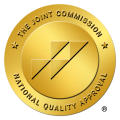Treating Spanish Speaking Patients in Rehab
Article Contents
Rates of Substance Abuse in the Hispanic Community
The Hispanic population in the United States is expected to increase to more than 30% of the total population by 2050.1 With that in mind, it is vital to ensure that substance abuse and addiction treatment are equally as accessible and work to remove disparities in the treatment environment.
Although the rates of addiction among Spanish-speaking populations tend to mirror other cultural communities, there are a few notable differences. Data from the 2018 National Survey on Drug Use and Health indicates approximately 7.1% of Hispanic Americans meet the diagnostic criteria for a substance use disorder compared to 7.4% of the total population.2 The rate of illicit drug use (approximately 3%) is similar among Hispanic communities and the total United States population.
In addition, there are slight differences in addiction rates across Hispanic communities. For example, Puerto Ricans have the highest rate of illicit drug use (compared to the total population) at almost 7%, whereas South Americans have the lowest at just over 2%.3 Like the total population, the most abused drugs among teens and adults in Latino communities include marijuana and prescription opioids. Other problem substances include heroin, ecstasy, cocaine, and alcohol.
Signs and Symptoms of a Substance Use Disorder
The Substance Abuse and Mental Health Services Administration states a “Substance use disorder occurs when a person’s use of alcohol or another substance (drug) leads to health issues or problems at work, school, or home.”4
The exact cause of substance use disorder (SUD) is unknown. However, there are many potential contributing factors, including genetics, peer pressure, emotional stressors, mental health conditions (such as depression and anxiety), environmental stressors, family history, and more. Many who develop substance use disorder also have underlying mental health or medical conditions that lead to utilizing substances to cope with symptoms or pain.
Recovery Obstacles for Spanish Language Patients
For Spanish-speaking patients seeking recovery from a SUD, there are, unfortunately, various challenges. Above and beyond stigma, fear, and apprehension that occurs across all communities, Spanish-speaking patients experience other challenges unique to the Hispanic community.
Language Barrier
When a patient speaks Spanish, but their treatment provider does not, it makes the treatment process difficult. Unfortunately, the person seeking treatment is unable to derive any benefit from the program. Most treatment plans require substantial communication between the treatment provider and patient. A treatment center that does not provide multilingual treatment services is often less beneficial for someone who does not speak English or for whom English is a second language.
Financial Issues
Another challenge faced by Spanish-speaking patients is financial issues. Addiction treatment can be expensive, yet many Hispanic community members are either uninsured or lack the financial ability to self-pay for treatment. As a result, they will often choose to forego seeking potentially life-saving treatment out of fears surrounding how they will pay for services.5
Limited Access to Treatment
As with concerns surrounding language barriers, there is also limited access to treatment for Hispanic community members.
In many cases, limited access arises out of a lack of treatment centers with multilingual treatment providers. Moreover, it is not uncommon for Latino/Hispanic community members to live close together. In some cases, this factor means they live far from the nearest treatment center, and the ability to access treatment services becomes limited.
Resistance to Trust Outsiders
There is often a notable level of distrust between members of the Hispanic community and “outsiders.” Resulting from years of stigma, misunderstanding, and notable cultural differences, it is not uncommon for Hispanic community members to look to non-Hispanic treatment providers and feel concerned about the type of treatment they may receive.
Hispanic individuals may also be worried about the efficacy of the treatment provided when treatment providers are not part of their community.
The Importance of Rehab for Spanish Language Patients
Unfortunately, Hispanic Americans experience greater consequences of substance abuse compared to non-Hispanic members of the population. As noted above, the rates of substance abuse among Hispanic Americans are somewhat like those of the overall US population. However, there is a significant gap between Hispanics in the overall population regarding seeking and receiving addiction treatment.
Studies show that Hispanic Americans have less access to substance abuse treatment and often have to wait longer to access services when compared to non-Hispanics. Addiction rehabs need to provide services in an environment that allows comfort and access to recovery for all. Language also plays a significant role in access to recovery. SUD programs that offer services in Spanish are vital to one of the most rapidly growing demographics in the United States.
The ability to receive services without concerns related to language barriers and cultural challenges enhances feelings of comfort and support during the treatment process. It is easier to immerse oneself in a treatment program that takes place in an environment where Hispanic Americans feel supported and feel capable of participating actively. A Spanish-speaking therapy program allows participants to convey their needs and receive comprehensive, evidence-based addiction treatment to help them achieve sobriety and maintain ongoing recovery.
How Can a Treatment Facility Be Culturally Competent?
Spanish Speaking Staff Members
Cultural competence among staff and administrative personnel at a treatment facility is vital to the success of Spanish-speaking program participants. To ensure cultural competence, staff members who interact with the patients must be educated in the Spanish language. At a minimum, staff should be capable of understanding and responding to communications from their patients. This factor will help them better and more compassionately attend to their patient’s needs.Sensitivity to Cultural Nuances
It is also essential for staff members to understand the nuances of their patient’s culture. Having a clear understanding of the religious beliefs, knowledge surrounding substance use, family dynamics, and other culture-specific characteristics of the Hispanic community will again help treatment providers give supportive and compassionate care that considers their patient’s unique needs.
Representation of Hispanic Community
Employing a culturally diverse staff provides an environment of comfort for the patient. In some cases, patients may feel better or more comfortable communicating with staff who represent their cultural history and background. Providing this opportunity for open communication may go a long way in increasing positive patient outcomes.
It is also important to ensure available treatment models reflect the cultural values specific to the client’s culture. Many cultural backgrounds have beliefs and restrictions surrounding various forms of medical treatment, including the use of medications and other medical procedures. The staff should clearly understand these restrictions and concerns before beginning treatment. Failure to do so could come across as cultural insensitivity to patients seeking treatment.
The Hispanic American population comprises a significant part of the total population of the United States. Consequently, it is vital for addiction treatment facilities across the nation to provide culturally sensitive and culturally inclusive treatment models as part of their rehab programs. It is also vital to ensure that treatment-related decisions and facility-related operational decisions consider the demographic served by the addiction treatment facility.
Resources
https://www.ncbi.nlm.nih.gov/pmc/articles/PMC3059600/
https://www.samhsa.gov/data/report/2018-nsduh-detailed-tables
https://archives.drugabuse.gov/sites/default/files/minorities03_1.pdf
https://www.samhsa.gov/find-help/disorders
http://sites.edb.utexas.edu/uploads/sites/136/2018/09/Pinedo_Latinos_Barriers-to-treatment.pdf




